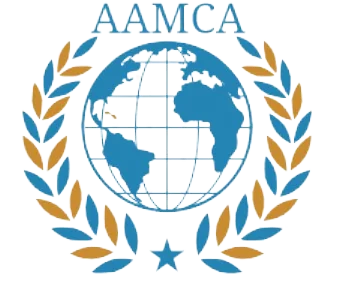Introduction: Understanding the Global Landscape
The issue of conflict-related sexual violence has emerged as a pervasive global crisis, affecting countless individuals across various regions. Recent warnings from United Nations officials to the Security Council underscore a worrying trend: the alarming rise in the incidence of sexual violence during armed conflicts. According to reports, data shows that such acts have not only increased in frequency but also in brutality, with perpetrators often operating with impunity. The scale of this violence is staggering, with millions of women, men, and children falling victim to these heinous acts in conflict zones around the world.
Statistical analyses reveal a disturbing pattern, indicating that conflict-related sexual violence is becoming more systematic and widespread. For instance, in certain regions, instances of sexual violence have surged dramatically in the wake of escalating conflicts, with an estimated increase of over 50% in reported cases during the last decade alone. These statistics reflect the severity of the situation and the urgent need for international attention and intervention. Furthermore, reports indicate that sexual violence is increasingly being used as a weapon of war, aimed at instilling fear and exerting control over civilian populations.
The current landscape demands a comprehensive understanding of the factors contributing to this crisis. The interplay of socio-political instability, the breakdown of law and order, and the subsequent empowerment of armed groups create an environment where sexual violence can thrive. Moreover, cultural attitudes towards gender and violence exacerbate the situation, often leaving survivors marginalized and without support. Addressing these contributing factors is essential for developing effective strategies aimed at mitigating the impact of conflict-related sexual violence globally. As we delve deeper into this pressing issue, it becomes evident that sustained efforts from the international community, governments, and organizations are crucial to combat this crisis and protect the most vulnerable populations affected by it.
Rise in Documented Cases: An Alarming Trend
The recent surge in documented cases of conflict-related sexual violence is alarming, reflecting a disturbing trend that has been observed globally. According to reports, there was a remarkable increase of 50% in cases in 2023, followed by an additional 25% rise in 2024. This escalation underscores a troubling pattern in which sexual violence has become increasingly normalized during conflicts and humanitarian crises. The statistics present a compelling narrative of the growing vulnerability of marginalized groups in conflict zones, especially women and children, who often bear the brunt of such violence.
Data indicates that regions experiencing prolonged conflicts have seen the most significant upticks in reported incidents. For example, countries such as Yemen, Syria, and the Democratic Republic of the Congo have reported harrowing statistics, which contribute to the overall global increase. As warfare becomes increasingly brutal and less discriminate, sexual violence is frequently employed as a tactic of war, aimed at instilling terror, displacing populations, and undermining social cohesion. The implications of these statistics extend beyond immediate physical harm, as they have profound psychological effects on victims and communities.
Furthermore, the rise in documented cases of sexual violence is symptomatic of a broader deterioration in the international community’s ability to protect human rights amidst escalating conflicts. The correlation between increased violence and instability emphasizes the urgent need for enhanced international legal frameworks and protective measures to safeguard vulnerable populations. Authorities and humanitarian organizations must address these unsettling developments by prioritizing comprehensive approaches that include prevention, response, and support systems for survivors. Through a concerted effort, it will be possible to mitigate the impacts of conflict-related sexual violence and work toward a more secure future for all affected individuals.
Drivers of Conflict-Related Sexual Violence
Conflict-related sexual violence has emerged as a pervasive and disturbing phenomenon in many global conflict zones. Various interrelated factors are thought to drive this escalation, one of which is the rise in armed conflicts themselves. As warfare becomes more intense, the resulting chaos can create an environment where sexual violence is used as a tactic of war. This form of violence serves multiple purposes for armed groups, from instilling terror in communities to asserting dominance over adversaries.
Another significant driver of conflict-related sexual violence is the deepening food insecurity faced by civilian populations. Prolonged conflict disrupts agricultural production and supply chains, leading to scarcity of resources. In desperate situations, armed groups may exploit vulnerable communities by using sexual violence as a means to control access to food and other necessities. Additionally, as economic conditions deteriorate, men and women reliant on humanitarian assistance become more susceptible to exploitation, further entrenching cycles of violence and deprivation.
The reduction in humanitarian aid also plays a crucial role in exacerbating this crisis. Limited resources restrict the ability of organizations to provide essential services, including protection for vulnerable individuals. As humanitarian interventions decrease, armed groups often take advantage of the power vacuum, leading to an increased occurrence of sexual violence. This not only destabilizes communities but also reinforces the strategic use of sexual violence as a weapon, enhancing the economic and psychological grip that armed factions hold over their targets.
In conclusion, the escalation of conflict-related sexual violence can be linked to several drivers, including rising warfare, deepening food insecurity, and reduced humanitarian aid. Understanding these interconnected factors is vital for addressing and ultimately mitigating this global crisis. Comprehensive strategies are necessary to tackle the underlying causes of this violence and restore stability in affected regions.
Case Studies: Specific Crises Highlighted
Examining case studies from different regions illustrates how conflict-related sexual violence manifests in varying contexts, underscoring the pervasive nature of this global crisis. One significant example is the ongoing conflict in Sudan, where armed groups have systematically employed sexual violence as a tool of war. Reports indicate that women and girls, often fleeing violence or seeking essential resources, are particularly vulnerable to rape, assault, and exploitation. This situation is compounded by a lack of effective legal frameworks and local support systems, leaving survivors isolated and unheard.
In Ukraine, the Russian invasion has further exacerbated the occurrence of sexual violence. As the conflict escalates, both state and non-state actors reportedly engage in acts of sexual violence against civilians, heightening fears among women and girls within both the Ukrainian territory and occupied regions. Testimonies reveal harrowing accounts of sexual exploitation, underscoring the urgent need for humanitarian actors to provide support services to survivors. The stress and trauma inflicted by these violations often lead to long-term psychological and physical health issues, which further emphasizes the need for prompt intervention and accountability.
Similarly, in the occupied Palestinian territory, sexual violence remains alarmingly prevalent amidst ongoing military confrontations. Women face increased risks not only from the conflict but also from entrenched gender discrimination. Reports of sexual harassment, assault, and other forms of violence escalate during military incursions, illustrating a grim reality for many Palestinian women. Restricted access to justice and healthcare services exacerbates their plight, indicating an urgent need for international attention and intervention.
The case studies from Sudan, Ukraine, and the occupied Palestinian territory clearly depict the grim reality of sexual violence in times of conflict. These crises highlight the necessity for accountability and robust international responses to safeguard the rights and dignity of women and girls affected by such heinous violations.




